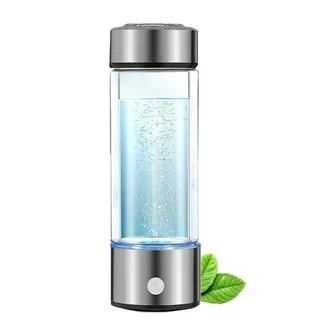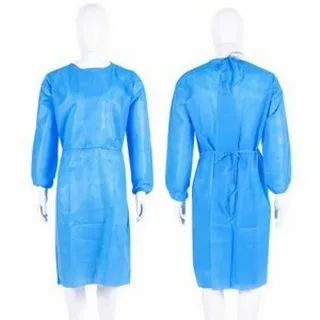Tattoo removal is a growing trend for people who regret their tattoos or want to remove tattoos for personal, professional, or medical reasons. In Islamabad, as in many other places, tattoo removal treatments are widely available. These treatments typically involve lasers, which are designed to break down the ink particles in the skin so that the body can naturally eliminate them over time. However, the key to a successful tattoo removal process goes beyond just the treatment itself; proper aftercare is essential to ensure the best results and to prevent complications.
In this blog post, we will explore the crucial aftercare steps that should be followed after undergoing tattoo removal in Islamabad.
1. Follow the Practitioner’s Instructions Carefully
The first and most important step in the aftercare process is to follow the specific instructions provided by your tattoo removal practitioner. Different clinics and practitioners may have varying recommendations based on the method used, the type of tattoo, and your skin type. They are the best resource for advice tailored to your specific needs.
Make sure to attend any follow-up appointments as recommended, so your practitioner can monitor your progress and address any concerns that arise.
2. Keep the Treated Area Clean and Dry
After the tattoo removal procedure, the treated area will likely be sensitive and prone to infection. It is essential to keep the area clean and dry to prevent any bacterial contamination. Wash the area gently with mild soap and water, using your fingers instead of a washcloth or sponge to avoid irritation. Pat the area dry with a clean, soft towel; do not rub the skin.
Avoid submerging the treated area in water for the first few days following the procedure, so steer clear of swimming pools, hot tubs, and baths. Showers are usually fine as long as the area is not subjected to intense water pressure.
3. Apply an Antibiotic Ointment
To prevent infection and promote healing, your practitioner may recommend applying an antibiotic ointment or a soothing cream to the treated area. This ointment helps form a barrier against bacteria and keeps the skin moisturized. It also aids in minimizing any discomfort or irritation during the healing process.
Ensure that the ointment is applied gently with clean hands, and avoid over-applying as it could lead to clogged pores or unwanted skin irritation.
4. Avoid Direct Sun Exposure
One of the most important aspects of tattoo removal aftercare is protecting the treated area from direct sunlight. The skin will be more sensitive after the procedure, and exposing it to UV rays can cause pigmentation changes, irritation, or even scarring. It is best to keep the treated area covered, or if exposure is unavoidable, apply a broad-spectrum sunscreen with an SPF of 30 or higher.
Sunscreen should be applied at least 30 minutes before going outdoors, and it should be reapplied throughout the day if you are sweating or swimming.
5. Avoid Scratching, Picking, or Scrubbing the Treated Area
As the tattoo removal area heals, it may form scabs or blisters. While this can be uncomfortable, it is crucial not to scratch, pick, or scrub the treated skin. This could cause scarring, infection, or the removal of ink before the skin has fully healed. Let any scabs or blisters naturally peel off as the skin heals.
You may notice some swelling or redness in the treated area, but this should subside in a few hours to a few days. If it persists, contact your practitioner.
6. Wear Loose Clothing Over the Treated Area
If the tattoo removal treatment is on an area that is typically covered by clothing, it is essential to wear loose-fitting clothing for the first few days after the procedure. Tight clothing can rub against the skin, causing irritation and delaying the healing process. Loose clothes allow your skin to breathe and avoid putting unnecessary pressure on the treated area.
7. Take Over-the-Counter Pain Relievers (If Needed)
Some people experience mild discomfort or pain following a tattoo removal procedure. If this happens, over-the-counter pain relievers, such as ibuprofen or acetaminophen, can be used to manage any pain or swelling. However, you should avoid aspirin as it can increase the risk of bleeding.
Always follow the dosage instructions provided on the medication packaging, and if pain persists or worsens, contact your practitioner.
8. Stay Hydrated and Eat Healthily
Keeping your body hydrated and nourishing it with healthy foods can speed up the healing process. Drink plenty of water and eat a balanced diet rich in vitamins and minerals, especially those that promote skin health, such as vitamin C, vitamin E, and zinc. Staying hydrated will also help the body process and remove the ink particles that have been broken down during the laser treatment.
9. Be Patient and Allow Time for Healing
Tattoo removal is a gradual process, and the healing of your skin will take time. Most people will need multiple sessions to fully remove the tattoo, and each session will require a period of healing between treatments. Do not be discouraged if the results are not immediately visible, and avoid rushing the process by scheduling treatments too close together.
It is essential to give your skin the time it needs to heal before undergoing additional sessions. Rushed healing can lead to adverse effects such as scarring or pigment irregularities.
10. Watch for Signs of Infection or Complications
While rare, infections and other complications can occur after tattoo removal treatments. If you notice excessive redness, swelling, pus, or warmth at the site of treatment, it could indicate an infection, and you should contact your practitioner immediately. Additionally, if you experience intense pain, fever, or an allergic reaction to any ointment or medication, seek medical attention.
Infections and complications can slow down the healing process or even lead to permanent scarring, so it’s crucial to take prompt action if you suspect something is wrong.
Conclusion
Tattoo removal in Islamabad offers an effective solution for people who want to erase unwanted tattoos. However, the success of your treatment relies heavily on proper aftercare. By following the above aftercare steps—keeping the area clean and dry, avoiding sun exposure, wearing loose clothing, and being patient—you can ensure the best results and promote faster healing.




